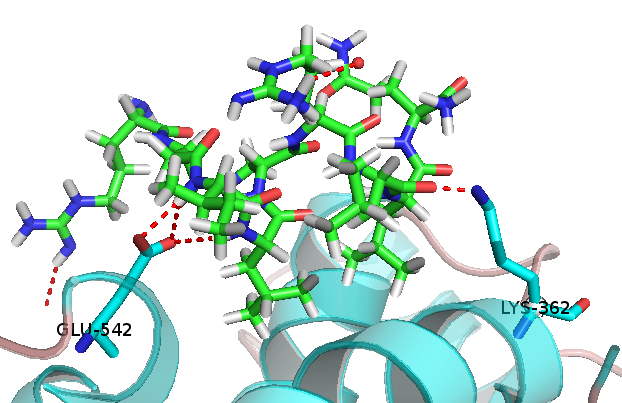-
Education & Experience
2009-2010 Postdoctoral Fellow, Department of Chemistry and Chemical Biology, Harvard University, Cambridge
2004-2008 Ph.D., Department of Chemistry, University of Chicago, Chicago
2001-2004 Master, Department of Chemistry, Tulane University, New Orleans
1996-2001 Bachelor, Department of Neuroscience and biophysics, University of Science and Technology of China
-
Awards & Honors
2010 National Cancer Center Postdoc Fellowship
2008 Harper Dissertation Fellowship
-
Research Fields
Our research group will work at the interface of chemistry and biology aiming to solve biological problems with chemical means. Our research fields include peptide engineering and microbiology.
1. Peptide engineering
Protein-protein interactions(PPIs) are generally viewed as undruggable targets for drug discovery and most of PPIs involves short helical peptides less than 15 amino acid residues. Our research will focus on peptide engineering strategies aims at targets directly related with human diseases, with focuses on infectious diseases and human cancers. Our research group studies biological functions and working mechanisms of important protein targets by chemically stabilized peptides. Based on structural and/or computational evidences, we are developing stabilized peptides which may have pharmaceutical applications to interrupt target protein interactions with their partners.

2. Microbiology
Another focus of Our research is to understand and regulate the virulence of human pathogens. Parallel to the above mentioned peptide engineering efforts towards developing peptide/protein inhibitors, we also try to find small molecule inhibitors for important targets with broad implications in human pathogens. Both rational designs based on structural and/or computational evidences and high throughput screening approaches against small molecule library will be applied for these purposes.
-
Selected Publications
1. Zhao et al. “Cross-Linked Aspartic Acid as a Helix Nucleating Template and its Applications to Estrogen Receptor-a Inhibitors.” In Revision
2. Zhang et al. “Remote Chirality Induced Single Turn Peptide Helicity” Submitted
3. Hu et al. “An In-tether Chiral Center Modulates Peptides’ Helicity, Cell Permeability and target binding affinity” Submitted
4. Zheng et al. “5,5′-Methylenedisalicylic Acid (MDSA) Modulates SarA/MgrA Phosphorylation by Targeting Ser/Thr Phosphatase Stp1” Chembiochem 2015, 16,1035.
5. Sun et al. “Targeting MgrA-Mediated Virulence Regulation in Staphylococcus aureus Angew. Chem. Int. Ed.” Chem. Bio. 2011, 18, 1032.